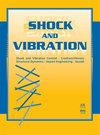Acoustic Emission Characteristics and Initiation Mechanism of Instantaneous Rock Burst for Beishan Granite
IF 1.2
4区 工程技术
Q3 ACOUSTICS
引用次数: 0
Abstract
In this paper, the instantaneous rock burst test of Beishan granite is carried out by using a deep rock burst simulation test system and an acoustic emission monitoring system. The acoustic emission data were monitored in real time during the test. The variation of the number and energy of acoustic emission events was studied, and the distribution characteristics of rock burst debris were analyzed. Based on plate and shell mechanics, the failure process of surrounding rock is discussed from the perspective of structural stability. The results show that (1) when the vertical stress reaches 171.31 MPa, the specimen is destroyed and the number of acoustic emission events and cumulative absolute energy before the specimen is destroyed increase sharply. (2) The debris generated by rock burst is mainly composed of slab debris, flaky debris, and thin flaky debris, accounting for 93.53% of the total debris. (3) When the length or height of the rock slab is constant, the maximum tensile stress in the rock slab decreases nonlinearly with the increase of rock slab thickness. For the same size of the rock slab, the farther away from the roadway wall, the greater the maximum tensile stress in the rock slab. (4) When the thickness of the rock slab is constant, the maximum tensile stress in the rock slab increases nonlinearly with the increase of height to thickness ratio K. When the ratio of height to thickness K is constant, the maximum tensile stress in the rock slab increases with the increase of rock slab thickness h. (5) With the increase of covering depth, the critical failure thickness of the rock slab decreases nonlinearly and the surplus energy increases nonlinearly.北山花岗岩瞬时岩爆的声发射特征和引发机制
本文利用深部岩爆模拟试验系统和声发射监测系统对北山花岗岩进行了瞬时岩爆试验。试验过程中实时监测了声发射数据。研究了声发射事件的数量和能量变化,分析了岩爆碎屑的分布特征。基于板壳力学,从结构稳定性的角度讨论了围岩的破坏过程。结果表明:(1)当垂直应力达到 171.31 MPa 时,试样破坏,试样破坏前的声发射事件数量和累积绝对能量急剧增加。(2)岩爆产生的碎屑主要由板状碎屑、片状碎屑和薄片状碎屑组成,占碎屑总量的 93.53%。(3)当岩板长度或高度不变时,岩板的最大拉应力随岩板厚度的增加而非线性减小。在岩板尺寸相同的情况下,离巷道壁越远,岩板的最大拉应力越大。(4) 当岩板厚度不变时,岩板最大拉应力随高厚比 K 的增大而非线性增大。
本文章由计算机程序翻译,如有差异,请以英文原文为准。
求助全文
约1分钟内获得全文
求助全文
来源期刊

Shock and Vibration
物理-工程:机械
CiteScore
3.40
自引率
6.20%
发文量
384
审稿时长
3 months
期刊介绍:
Shock and Vibration publishes papers on all aspects of shock and vibration, especially in relation to civil, mechanical and aerospace engineering applications, as well as transport, materials and geoscience. Papers may be theoretical or experimental, and either fundamental or highly applied.
 求助内容:
求助内容: 应助结果提醒方式:
应助结果提醒方式:


